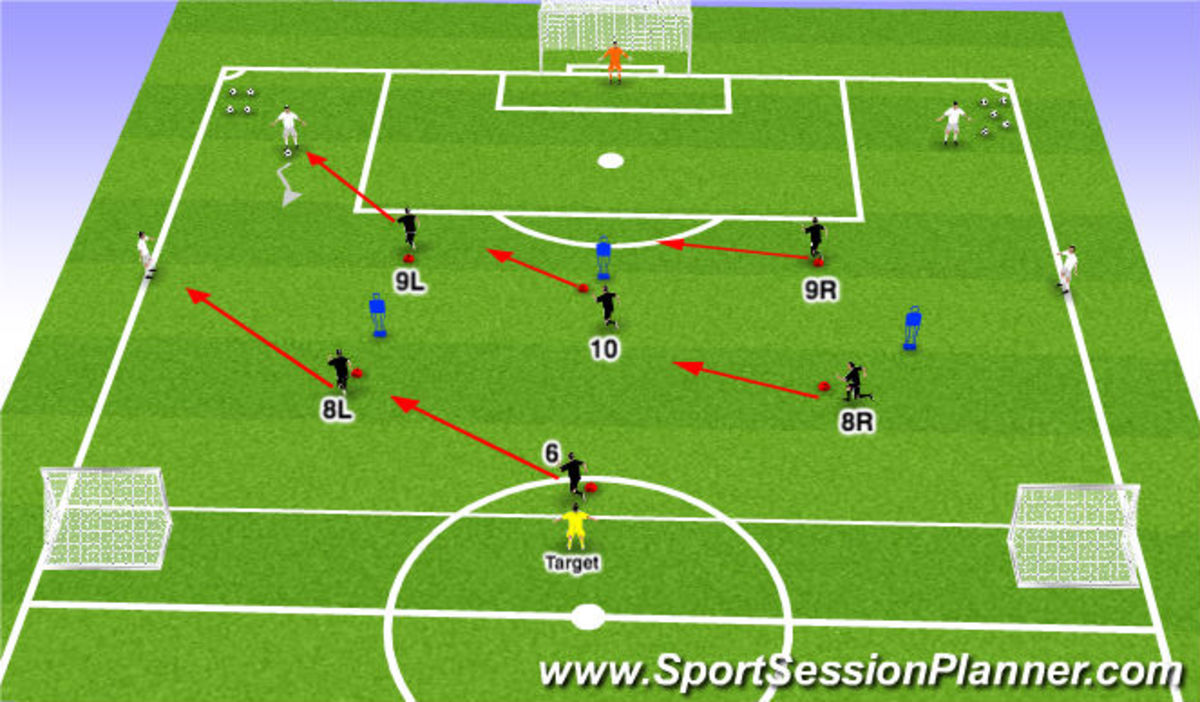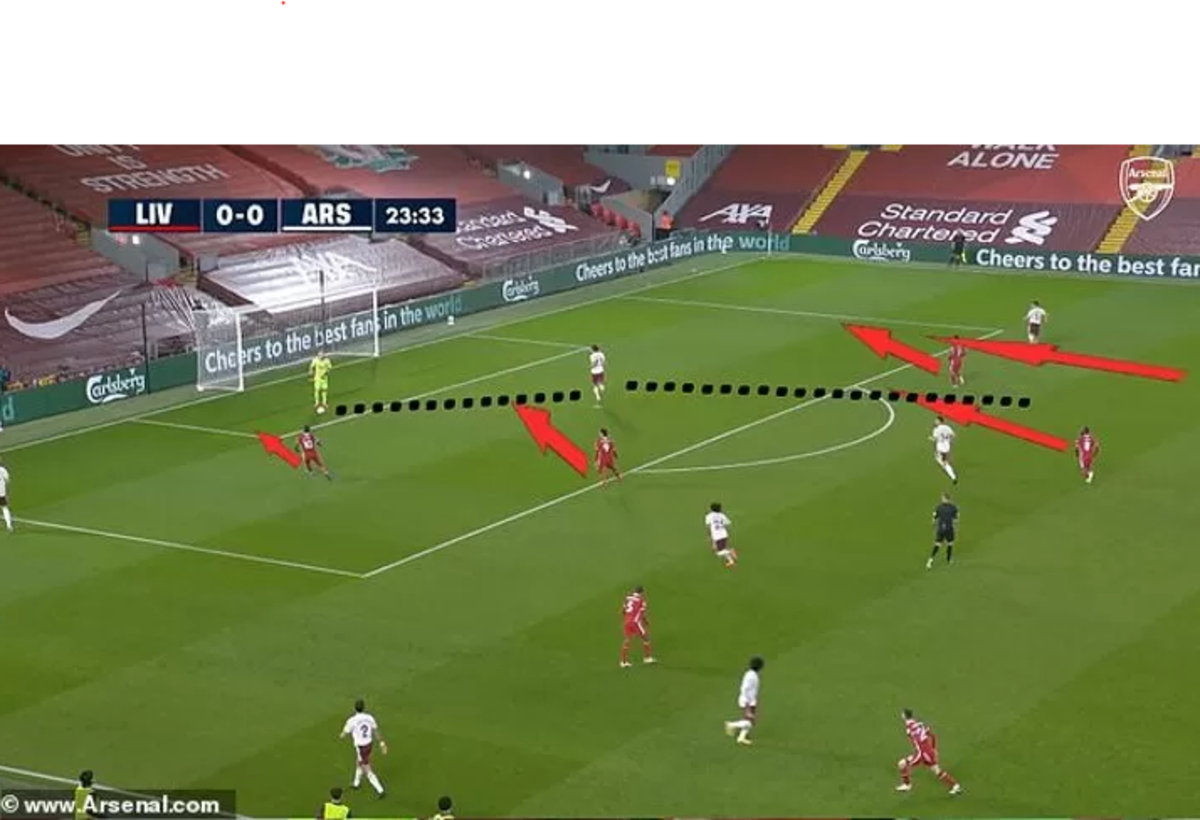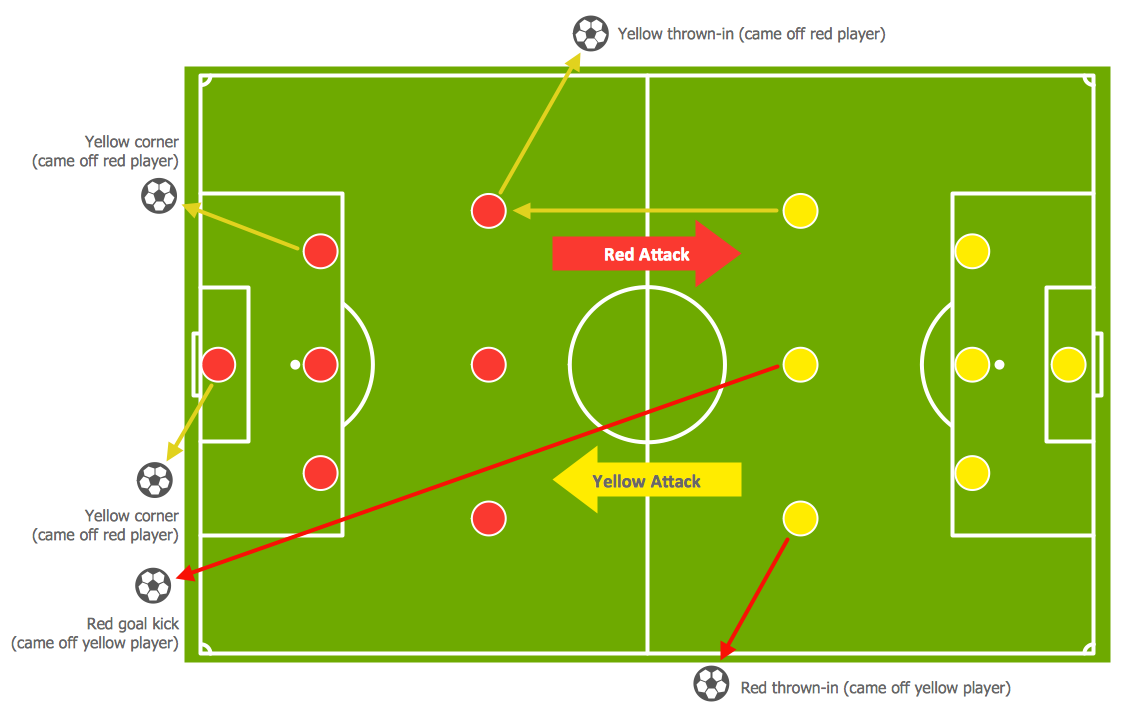
The Relentless Pursuit: Deconstructing High Pressing Tactics in Modern Football
In the intricate, ever-evolving tapestry of modern football, few tactical concepts have garnered as much attention, admiration, and strategic dissection as the high press. Once a revolutionary idea, it has now become a fundamental pillar for many of the world’s most successful teams, transforming the game from a measured build-up to a relentless, high-octane battle for possession in advanced areas. Far more than just "running a lot," high pressing is a sophisticated, highly coordinated defensive and offensive strategy that demands immense physical prowess, acute tactical intelligence, and unwavering collective commitment.
This article will delve into the essence of high pressing, exploring its historical roots, dissecting its mechanics, examining its undeniable benefits and inherent risks, highlighting the crucial elements for its successful implementation, and discussing its profound impact on the beautiful game.
Defining the Beast: What is High Pressing?
At its core, high pressing is a proactive defensive strategy aimed at winning the ball back as close to the opponent’s goal as possible. Unlike traditional deep-block defending, which invites the opponent to attack and focuses on protecting one’s own penalty area, high pressing seeks to suffocate the opponent’s build-up play from the moment they gain possession, often even from their own goalkeeper or defenders.
The philosophy behind it is twofold:
- Disruption: By applying immediate, intense pressure, the pressing team aims to force the opponent into mistakes, hurried decisions, or long, hopeful passes, thereby preventing them from establishing a rhythm or executing their intended attacking patterns.
- Opportunity Creation: Winning the ball high up the pitch inherently places the pressing team in a dangerous attacking position, closer to the opponent’s goal with their defensive shape likely compromised. This creates immediate, high-probability scoring chances through transitions.
High pressing is not a chaotic chase; it is a meticulously choreographed movement. It relies on specific triggers, collective compactness, and an unwavering commitment from every player on the field to execute their role in the system.
A Stroll Through History: Evolution of the Press
While the high press feels like a contemporary phenomenon, its roots stretch back decades, evolving through various iterations and tactical masterminds:
- Rinus Michels’ Total Football (1970s): Often cited as the progenitor, Michels’ Ajax and Netherlands teams introduced the concept of fluid positions and collective pressing. Players were interchangeable and relentlessly hunted the ball, ensuring constant pressure on the opponent. This laid the philosophical groundwork for what would become high pressing.
- Arrigo Sacchi’s AC Milan (Late 1980s/Early 1990s): Sacchi took Michels’ ideas and refined them into a more rigid, yet equally devastating, system. His Milan side perfected the art of compactness and the offside trap, squeezing the pitch and forcing opponents into tight spaces where they could be swarmed. Their press was highly coordinated, with all players moving as a single unit.
- Pep Guardiola’s Barcelona (Late 2000s): Guardiola’s Barcelona brought the high press to a new level of sophistication, blending it seamlessly with their positional play ("Juego de Posición"). Their "six-second rule" (winning the ball back within six seconds of losing it) became legendary. The press was not just about winning the ball, but about winning it back in specific zones to immediately launch attacks. Their press was often triggered by the opponent’s body orientation, a poor touch, or a pass into a predetermined trap.
- Jürgen Klopp’s Gegenpressing (2010s-Present): Klopp’s Dortmund and Liverpool teams popularized "Gegenpressing" (counter-pressing). This specific form of high pressing focuses on the immediate reaction after losing possession. Instead of retreating, players instantly swarm the ball carrier, aiming to win it back before the opponent can organize a counter-attack. Klopp famously stated, "The best moment to win the ball is immediately after your team just lost it. The opponent is still looking for orientation where to pass the ball. Everybody is tired." This aggressive, transition-focused press has been incredibly effective.
Today, elements of all these philosophies can be seen in top teams across the globe, indicating a continuous refinement and adaptation of the high press.
The Mechanics: Types, Triggers, and Formations
High pressing isn’t monolithic; it manifests in various forms, each with its nuances:
- Man-Oriented Press: Players are assigned specific opponents to mark and follow closely. When a trigger occurs, they intensely pursue their designated player. This can be effective in shutting down key playmakers but can also create space elsewhere if the pressing player is dragged out of position.
- Ball-Oriented Press: The focus is on the ball. Players shift collectively as a unit, forming a compact shape around the ball carrier, regardless of who their direct opponent might be. This emphasizes zonal coverage and suffocating the space around the ball. Most modern high pressing is a hybrid, combining elements of both.
- Pressing Triggers: These are specific cues that signal to the entire team that the press should be initiated or intensified:
- Back Pass: When a defender or midfielder passes the ball back to their goalkeeper or a deep-lying defender.
- Poor Touch: A heavy touch by an opponent that leaves the ball exposed.
- Sideline/Corner Traps: Forcing the opponent into a touchline or corner, using the boundary as an extra defender.
- Goalkeeper Possession: When the opposing goalkeeper has the ball, especially if they are known for poor distribution.
- Body Orientation: An opponent receiving the ball with their back to goal or in an awkward position.
- Specific Zone Entry: When the ball enters a pre-determined "pressing zone" on the pitch.
Formations often complement a high press. A 4-3-3 or 4-2-3-1 provides the natural triangles and numerical advantages in midfield necessary to overwhelm opponents. The front three or four players initiate the press, supported closely by the midfield, while the defensive line pushes high to maintain compactness and squeeze the pitch.
The High Rewards: Benefits of the Press
The widespread adoption of high pressing is a testament to its significant advantages:
- Immediate Goal Scoring Opportunities: By winning the ball in advanced areas, the team is already in a dangerous position, often with opponents out of shape, leading to quick transitions and high-probability chances.
- Disrupting Opponent Build-Up: It prevents the opposition from establishing rhythm, building confidence, or executing their pre-planned attacking strategies. This forces long balls, hurried clearances, or turnovers.
- Psychological Edge: A relentless, well-executed press can be incredibly intimidating. Opponents feel suffocated, make more mistakes, and their confidence wanes. It projects an image of dominance and intensity.
- Control of Tempo: Even without possession, a high press dictates the pace of the game. It forces the opponent to play at a higher tempo than they might prefer, often leading to fatigue and errors.
- Energy Generation: Winning the ball high and creating chances fuels the team’s energy and morale, fostering a positive feedback loop.
The Inherent Risks: Vulnerabilities of the Press
Despite its benefits, high pressing is not without its perils. It is a high-risk, high-reward strategy:
- Physical Exhaustion: Sustaining an intense press for 90 minutes is incredibly demanding. Players must cover vast distances at high intensity, leading to fatigue in later stages of games or over a long season, increasing susceptibility to injuries.
- Vulnerability to Long Balls: If the press is breached or bypassed with a well-aimed long pass over the top, the high defensive line can be exposed, leaving vast spaces for quick attackers to exploit.
- Disorganization: A single player failing to execute their role or a miscommunication can create massive gaps, allowing the opponent to break lines and attack with numerical superiority. The entire system relies on collective synchronicity.
- Exposure to Technical Players: Teams with highly press-resistant midfielders and defenders (e.g., Sergio Busquets, Frenkie de Jong, Rodri) who can receive under pressure, turn, and pass accurately can dismantle a press.
- Card Accumulation: The aggressive nature of the press can sometimes lead to tactical fouls, especially when players are chasing back or trying to prevent a counter-attack, resulting in yellow or red cards.
Pillars of a Successful Press: What It Takes
Implementing an effective high press requires more than just a coaching philosophy; it demands specific attributes and meticulous preparation:
- Physicality and Stamina: Players must be exceptionally fit, capable of repeated sprints, rapid accelerations, and continuous movement throughout the match. Aerobic and anaerobic capacity are paramount.
- Tactical Intelligence and Understanding: Every player must understand their specific role within the pressing scheme – who to press, when to press, what angles to take, and how to cover for teammates. This requires constant communication and game intelligence.
- Communication: Verbal and non-verbal cues are vital. Players must constantly communicate about opponents’ positions, passing lanes, and triggers to ensure the press is synchronized.
- Brave Goalkeeper (Sweeper-Keeper): A high defensive line necessitates a goalkeeper who is comfortable coming off their line to sweep up through balls and act as an additional outfield player, reducing the space behind the defense.
- Coaching and Training: The press must be drilled relentlessly on the training ground. Coaches use specific drills to simulate game situations, focusing on triggers, collective movement, and quick transitions. Video analysis is crucial for refinement.
- Player Profiles: Not every player is suited for a high-pressing system. Wingers must be diligent in tracking back, strikers must be the first line of defense, and midfielders must be tireless box-to-box operators.
Impact on the Modern Game and The Future
The widespread adoption of high pressing has fundamentally altered the landscape of modern football. It has forced teams to evolve, leading to:
- Emphasis on Press-Resistant Players: There’s a premium on defenders and midfielders who possess exceptional close control, vision, and composure under pressure to break the press.
- Rise of the Sweeper-Keeper: Goalkeepers are now expected to be adept with their feet and proactive in managing space behind the defense.
- Tactical Arms Race: As pressing became more prevalent, counter-tactics emerged. Teams started using deeper build-ups to bait the press, then launching long balls or quick combinations to exploit the vacated space. This creates an ongoing tactical chess match between teams.
- Data Analysis: Advanced analytics are used to identify pressing triggers, measure pressing intensity, and analyze opponent vulnerabilities to the press.
The future of high pressing will likely involve continued refinement. As teams become better at beating the press, coaches will adapt, perhaps introducing more flexible pressing schemes, varying intensity, or integrating it with other defensive structures. The tactical battle will continue, with high pressing remaining a dominant and thrilling aspect of football’s strategic depth.
Conclusion
From a tactical novelty born in the Netherlands to a global phenomenon perfected in Germany and Spain, high pressing has cemented its place as one of the most defining strategies of contemporary football. It embodies the sport’s evolution towards greater intensity, athleticism, and tactical sophistication. While demanding immense physical and mental fortitude, its rewards – immediate goal threats, psychological dominance, and control of the game’s rhythm – are undeniable.
The relentless pursuit of the ball, high up the pitch, is more than just a defensive tactic; it’s a philosophy that reflects a proactive, ambitious approach to the game. As football continues its dynamic journey, the high press will undoubtedly remain a cornerstone, pushing the boundaries of what is possible on the pitch and continuing to captivate fans worldwide.



